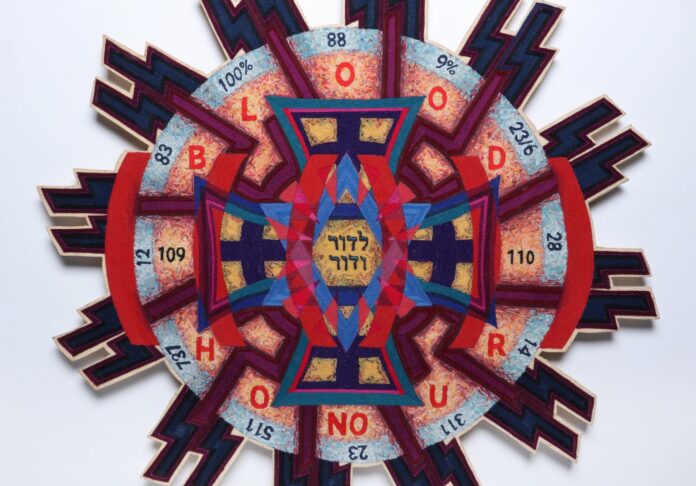Robin L. Bernstein has found a variety of mediums to voice political commentary. As a departure from earlier accomplished works in paint, wood carving, and graphite drawings on paper, she has discovered yet another path as a mixed media artist working with colored string and wax.
Born in St Louis, Missouri, Bernstein completed coursework in Visual Art and Science at the University of Illinois, Champaign-Urbana in the late 1970s. After graduating from Macalester College in St Paul, Minnesota (BA,1981) she began considering graduate school. With a strong interest in studying with Robert Colescott, who was teaching at the San Francisco Art Institute at the time, she moved to San Francisco to enroll in the MFA program in 1985.
“When I arrived, however, I was surprised to discover that he had abruptly left and taken a faculty position in Arizona. Having moved my life, I decided to stay, and it has made all the difference,” Bernstein told 48hills.
Completing her MFA in 1987, Bernstein remains committed to and inspired by the art community here. She says she knew she had found a place for herself when, in 1989, she saw Illusions of Shameless Abundance by Survival Research Labs performed under a San Francisco freeway overpass.
“The Bay Area is a lively, healthy, diverse urban place where you can find art exhibits, experiences and performances, theater and music, film, and dance in every shape and flavor from the long established to the interdisciplinary and experimental. Although art institutions have generally contracted in recent years, individual working artists and makers of all kinds are everywhere, generous and productive. Taking time to tour Open Studios in every corner of the Bay Area lends itself to the opening of the mind,” Bernstein said.
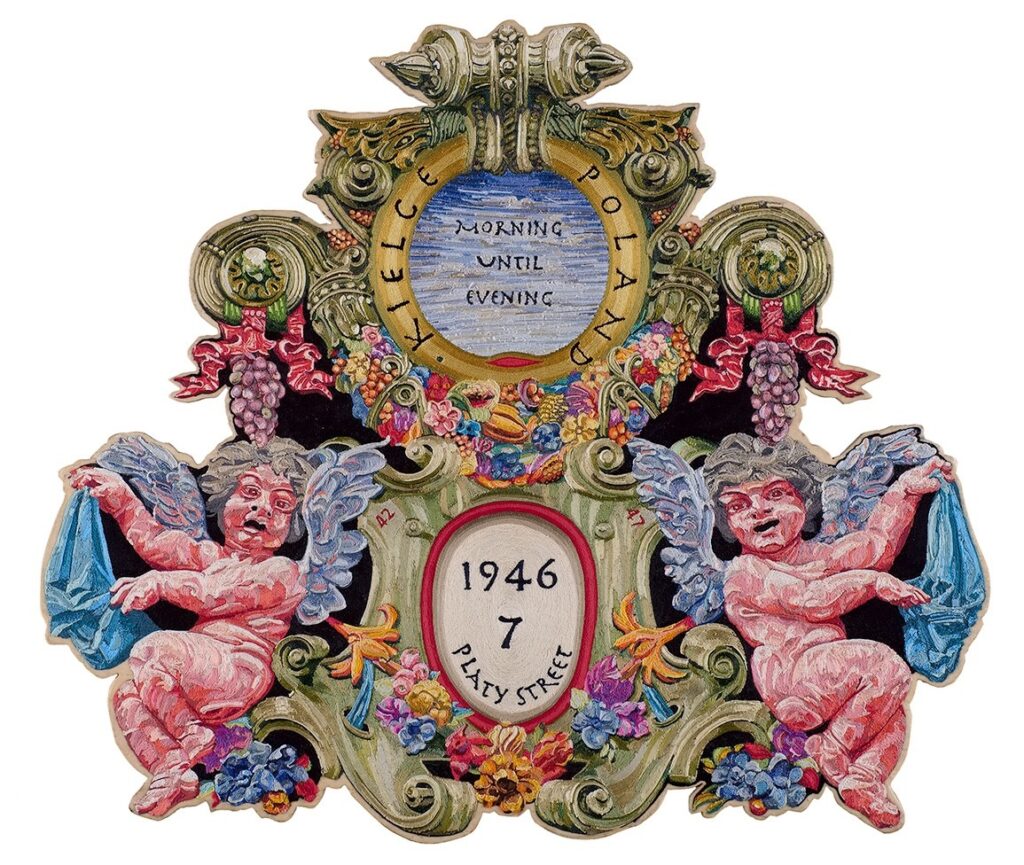
For nearly 30 years Bernstein and her husband, metal sculptor Ken Kalman, had lived in Canyon, an unincorporated part of Contra Costa County. She points out that the story of Canyon contained in its moniker: “Canyon, the Last Rustic Community in Metropolitan America” is decidedly true.
“For the same number of years plus three, we have maintained working studios and membership in the 45th Street Artists Cooperative in Emeryville. We just recently left our Canyon home and are reassembling our space in Emeryville. Transitioning back to live/work space has already reenergized my studio practice,” she said.
Many factors influence Bernstein’s mixed-media pieces. She cites the threat and rise of autocracy, theocracy, and fascism as themes in her work.
Help us save local journalism!
Every tax-deductible donation helps us grow to cover the issues that mean the most to our community. Become a 48 Hills Hero and support the only daily progressive news source in the Bay Area.
“Anger, injustice, sadness, and disappointment also fuel my work. Mixed in with this and perhaps because of this, my overarching inspiration is the lack of critical thinking and balanced education for children. The fact that by making the work makes me feel a whole lot better is not a small part of why I do it,” she said.
Bernstein says that her work has always felt current and urgent, and describes it as simultaneously beautiful, frightening, and compelling. Two years ago, she completed a 13-year project, titled Beauty and Terror, as a response to the Holocaust.
“A nearly unimaginable crime of state-sponsored terror and brutality resulted in the murders of six million Jewish people and five million non-Jewish people including Soviet prisoners of war, people with disabilities, ethnic Poles, Romani people, Gay people, political opponents and others. The works of Beauty and Terror contain major aspects of the Holocaust as well as lesser-known crimes and events, also redemptive stories and heroic acts of resistance,” Bernstein said.
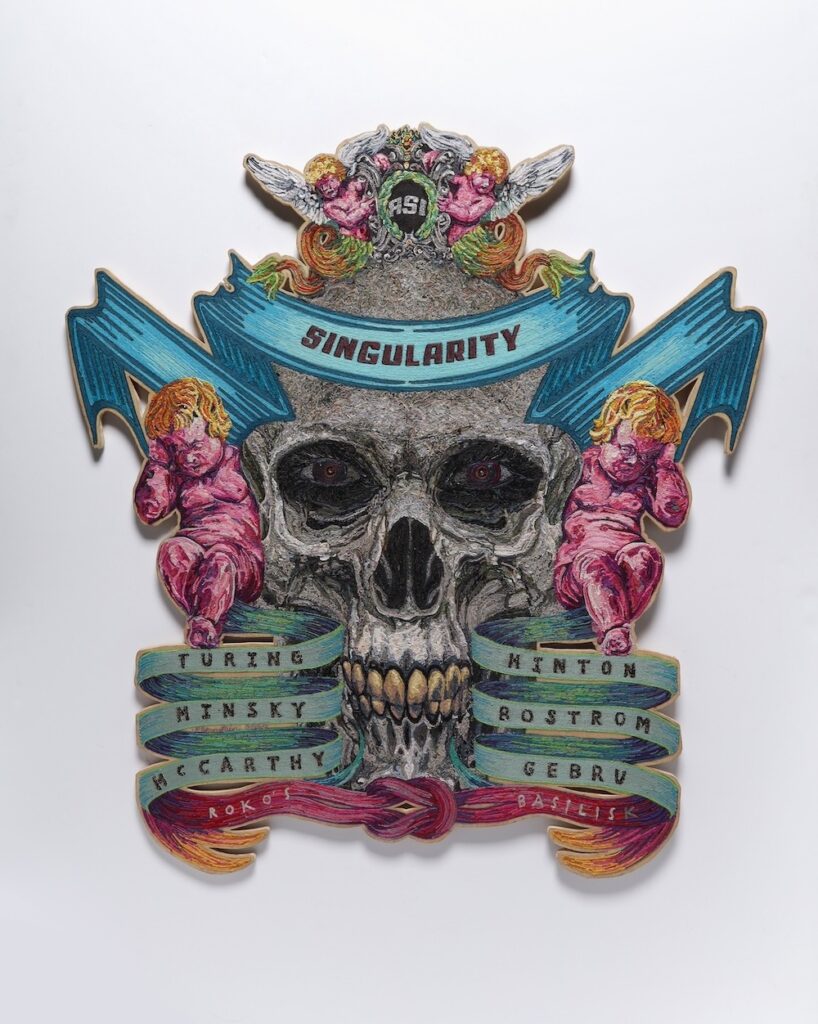
She adds that Beauty and Terror was created as an act of political resistance in a time of deep concern. Her pieces serve as warnings, memorials, and as educational opportunities and are intended to support the efforts of resistance to fascism worldwide. She has recently completed a new piece, L’Dor V’Dor, about antisemitism. The title translates from Hebrew into English as “from generation to generation” and the concept, Bernstein says, is that in the same way Jewish values and beliefs are passed down generationally, so is antisemitism similarly passed down.
“The work contains alphanumeric codes and symbols that are currently most frequently used by a range of white supremacist groups that identify Jews. I made the piece partially in response to the rise of antisemitic acts since Hamas brutally attacked Israelis on October 7. Since then, nearly 50% of American Jews have altered their behavior out of fear of antisemitism and Jewish hate. My work stands to educate people who have not benefitted from any kind of Holocaust education and to reinforce why advocating for peace is worth the effort,” Bernstein said.
A day in the studio for the artist begins with a 30-minute yoga practice, a cup of coffee, and an hour walk or hike with her two small dogs. Her workspace is separated from the living room inside the live/work studio by a free path. Surrounded by yarn and string in a multitude of colors, textures and weights, Bernstein says her process is fairly simple. First, creating a composition by drawing a design onto a piece of high-quality plywood, she then cuts out the shape with a jigsaw. Next, she brushes a melted beeswax mixture over the piece that hardens as it cools.
“I work from a loose color plan that I hold in my mind, which allows me to adjust as needed. Problems are expected and solving them is how the piece comes together in the end. It’s finished when every spot of wax is covered and I am highly satisfied,” she said.
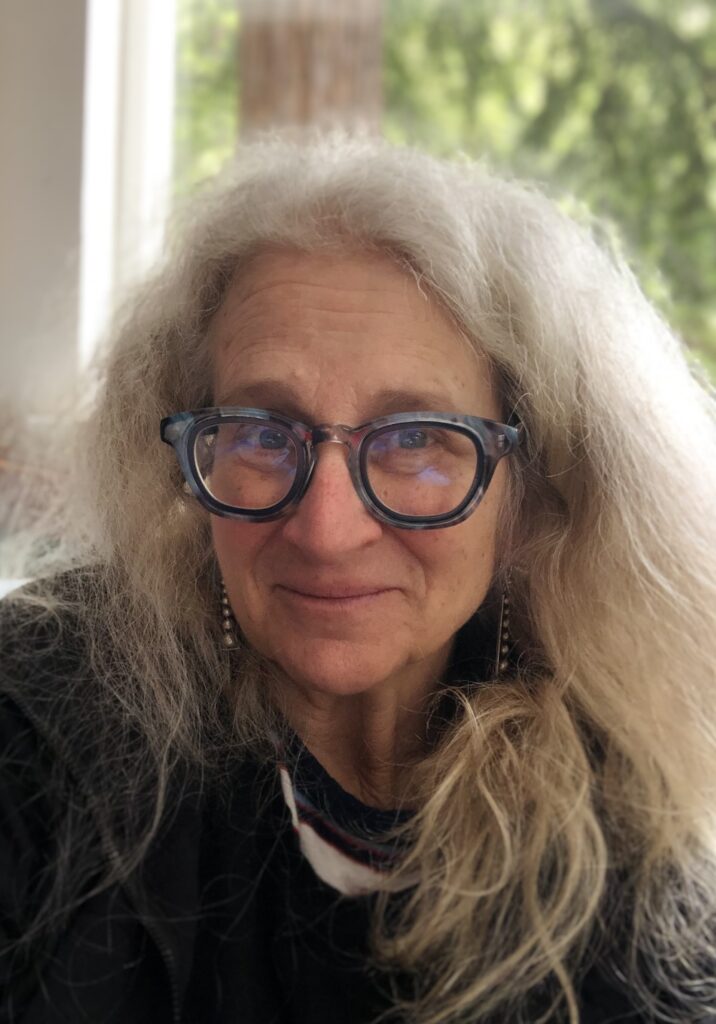
Because her artworks are created by pressing thousands of tiny cut pieces of colored string into a bed of wax with a chopstick, she works seated under a lamp which illuminates her work area while also softening the waxed surface.
“The wax, on its own, acts as the adhesive for the string. I cut the string using a pair of sharp, curved manicure scissors. Much of the string in Beauty and Terror is vintage, manufactured in Europe. My newer work, Hope Dies Last, uses a more contemporary palette as the content of this work involves present day concerns,” she said.
Her arrival at this particular medium and methodology came by necessity. Bernstein began making serious work while she was in college and initially considered herself a painter. After several years working in oil and acrylic, she adopted chalk pastel as her primary medium.
“My drawings were very large, utilized the figure, still life, and interior tableaus primarily and I worked this way for 10 years. Unfortunately, I developed an allergy to some of the pigments and could no longer use my fingers and hands without suffering. From there, I began making large colored pencil drawings incorporated into complex wood constructions that were also drawn upon with colored pencil. The constructions morphed into carved wooden forms, some drawn upon, some painted, and some covered with thousands of tiny escutcheon pins, carpet tacks, and hair,” she said.
Bernstein adds that she might have continued working that way for her entire life if she hadn’t chaperoned a children’s school trip to Oaxaca, Mexico in 2007. As a member of the art faculty for The Renaissance International School in Oakland, where she taught elementary and junior high school students for 13 years, she developed a curriculum well in advance based on the trip’s itinerary. In her research, she learned of the Huichol Indians of Northern Central Mexico who created yarn paintings as part of their spiritual practice.
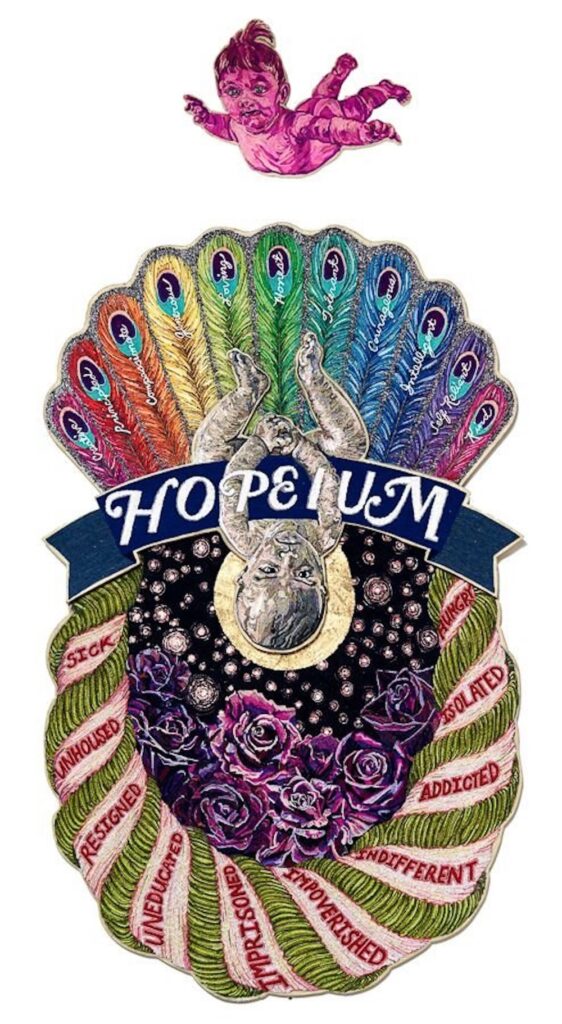
Their wax and yarn technique struck her as an excellent substitute for the glue and yarn method that so many children struggled with. In her own explorations with the materials, she found herself completely overtaken by the process and how it affected her as a human being.
“Sitting under a warm lamp with the smell of honey and wax rising while softly pressing yarn onto a beautiful wooden panel transformed my thinking and my art making. I realized almost immediately that this process could carry difficult content in a way that wood carving, painting, or drawing could not. I allowed myself to be direct in my messages as I knew that a beautiful surface would attract the viewer. It gave me surety that my ideas would be conveyed,” she said.
As an additional development, the pandemic shut down her involvement in the ArtMakers Studio School, which she founded and was Senior Instructor for 10 years. At that point in time, she had been teaching art from elementary school to community college for almost 40 years and it seemed like the right time to bring it to conclusion.
“It was an excellent decision because each of my large string paintings was taking me nearly six months to make, and without the teaching I could work much faster,” she said.
Bernstein is primarily represented by Transmission Gallery in Oakland, with a solo exhibition slated there for September 11 to October 25, 2025. She was recently included in the group exhibition, In-Flux: Recalibrating the Unknown, presented by SFAA (San Francisco Artists Alumni) at the Museum of Northern California Art in Chico, from March to May 2024.
Bernstein’s piece Hope Dies Last is included in the group exhibition, California Jewish Open, at the Contemporary Jewish Museum in San Francisco from June 6 to October 20, 2024. The exhibition has garnered some controversy due to the current political climate, resulting in several artists from the roster withdrawing their work. Bernstein says she entered the California Jewish Open in hopes of being part of what promised to be an interesting and welcome dialogue between artists, their work, visitors to the exhibition, curators and journalists.
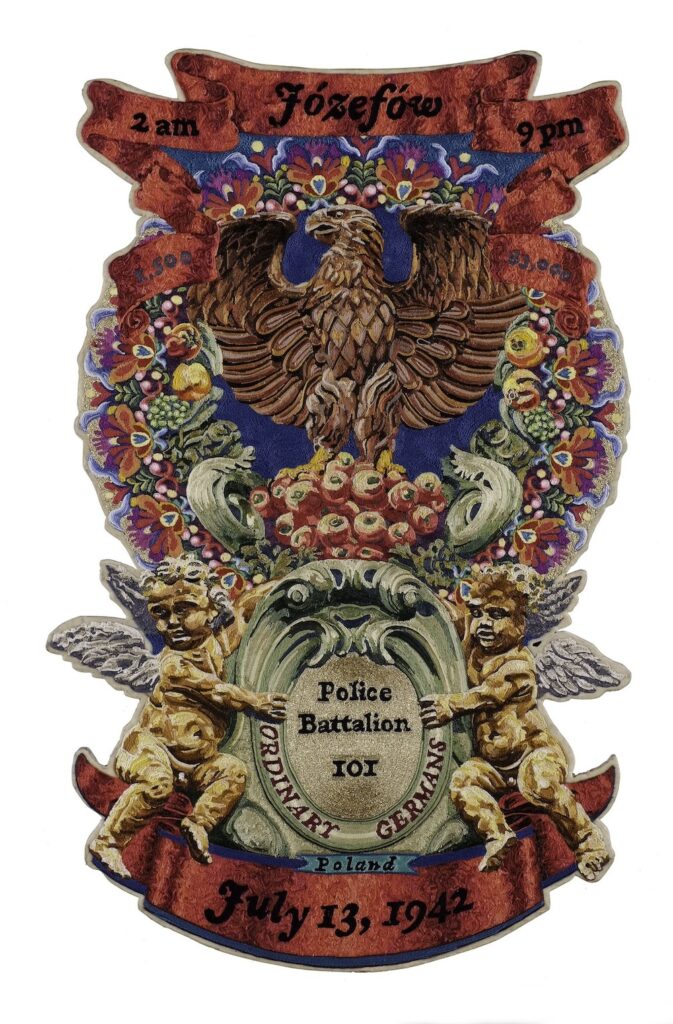
“I believe the artists who pulled their work did not enter with that intention and I was disappointed that they rejected the chance to share their political positions. I think they missed an important opportunity. I commend the museum for keeping control of the narrative by making space for the work and ideas despite some artists self-removing after acceptance,” she said.
In addition to participating in the exhibition, Bernstein will be leading several teen groups this summer and fall at the museum, introducing how an art practice can be used as a tool for activism.
On September 25, Bernstein will be interviewed for “Textile Talks” presented by SAQA (Studio Art Quilt Associates). And she will be featured in the upcoming book, “Global Craftivism Since the Pussyhats: Handcraft Responses to Violence, War, Illness, Isolation and Conflict” compiled by Hinda Mandell to be published by Rowman and Littlefield later this year. The chapter on her work titled, “Speaking Out About the Longest Hatred, Antisemitism and October 7, 2023” will be written by Mirka Knaster.
In her elaborate and earnest artworks, artist Robin L. Bernstein wants the beauty and obsessively crafted surfaces of her pieces to accomplish two things: to elicit a sensation of looking at treasure that will thusly draw us in to learn something new through careful and important narratives.
“I hope that people will understand that spending so much time on a message or a story from history, or a group of facts, is well worthwhile,” she said. “Always be looking.”
For more information, visit her website at robinlbernstein.com and on Instagram.

